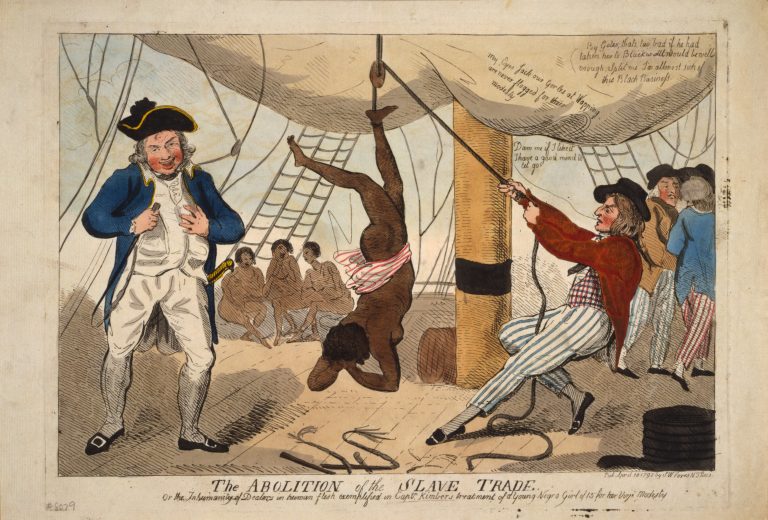By Frank Kamuntu
Joining the huddle of other museum visitors, I peered into the glass-covered pit where fragments of human bones were scattered in the earth. Evocative as the sight was, it was just a fraction of the estimated 30,000 bodies deliberately buried and hidden from sight in the Gamboa neighbourhood in Rio de Janeiro’s downtown.
“It wasn’t a cemetery, because that implies a sacred ground,” Kelly Tavares, a tour guide at Rio Encantos Experiences, told me during our tour of the Gamboa and Saúde neighbourhoods and Rio’s Port region, collectively known as “Little Africa” for its large African diaspora. “It was a mass grave.

Unearthed in 1996 during the renovations of a family home, the pit of bones was confirmed by archaeologists to be an 18th-Century makeshift burial ditch created by the Portuguese for the enslaved Africans who died from the two-month-long Atlantic crossing to Rio de Janeiro. Today, the site is the Memorial of the New Blacks, after homeowners Merced and Petrúcio Guimarães transformed it into a museum and research centre to preserve the history.
The memorial is one of several places to visit in Rio’s downtown port region to learn about the city’s slave trade history. It was in this district where about two million captives arrived at Portuguese ships between the 16th and 19th Centuries. The history of slavery and the years of resistance that followed are fundamental to Brazil’s story, where today almost half the population have some African ancestry, and the country’s most iconic emblems, such as samba, Carnival and capoeira, are rooted in Black culture.
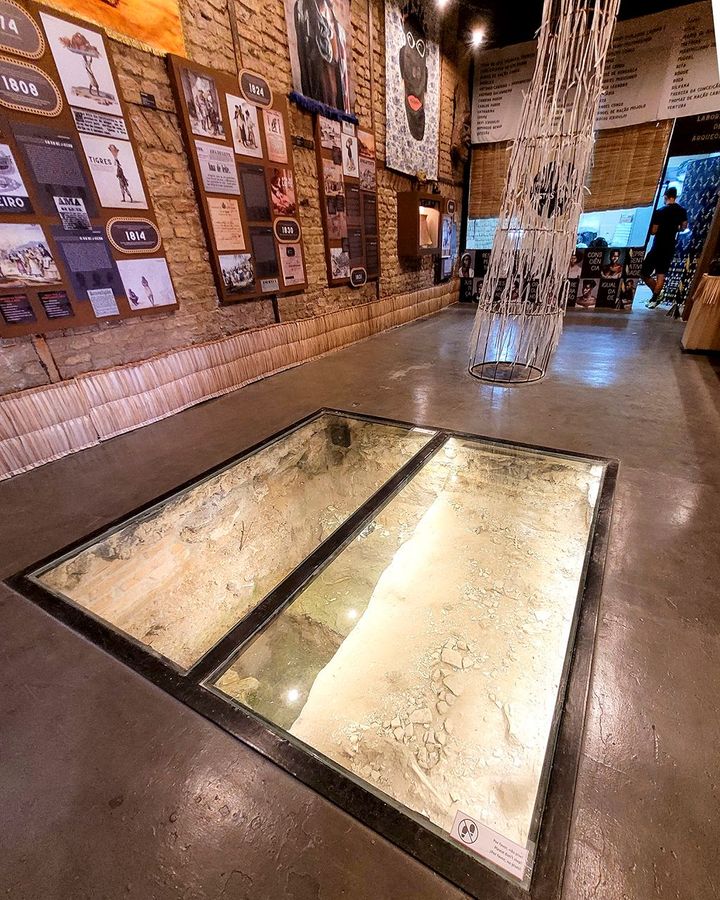
At the Memorial of the New Blacks, visitors can see a pit containing the bones of enslaved Africans (Credit: Thiago Lara/Riotur)
“We deliberately aren’t told about Black history and the significance of slavery in both Brazil and Rio,” said Ynaê Lopes dos Santos, a history professor at the Federal Fluminense University in Rio state. “From the 19th Century onwards, Rio became the largest slave city in the world.”
The best way to make sense of this history and its significance is to take a walking tour. Tavares, who specialises in telling the history of African and Indigenous legacies while exploring Little Africa’s cobblestone streets and graffiti-covered back alleys, gives the historic background of each location and its cultural importance.
Meeting at Praça Mauá square, we walked to Valongo Wharf, a 19th-Century port now lying in stone ruins. The surrounding multi-storey office buildings reflect the region’s current commercial importance. But as Tavares talked, in my mind’s eye I saw wooden cargo ships docking with the new arrivals of Black Africans, exhausted and malnourished having been kidnapped from their homelands, shackled together and made to lie flat during the long ocean crossing. Between 1811 and 1831, the port’s operating years, up to 900,000 enslaved Africans passed through this port alone. In November 2023, Rio’s government completed its renovations on the archaeological site and it now includes upright exhibition panels that tell of the history of the old port.
Before the opening of Valongo, Africans were brought into Rio through the port at Praça XV square. Just a 30-minute walk from Valongo Wharf, today the square is bustling with people pouring in and out of boats that connect Rio to the city of Niterói across Guanabara Bay. Surrounding Praça XV are well-maintained colonial buildings with links to the Portuguese crown, the part of the square’s history that is best-known. Yet it was here where one million Africans were brought into Brazil and forced into slavery, before the port was moved to the more distant Valongo to conceal the trade from Rio’s busy downtown and minimise the risk of contracting diseases.
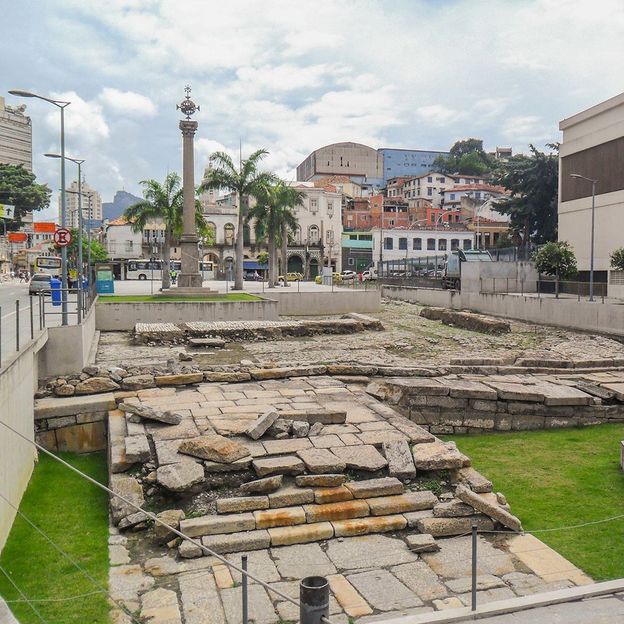
Walking 300m away from Valongo into the heart of Little Africa brought us to Largo do Depósito square, known nowadays as Praça dos Estivadores. On the surface, it seemed a nondescript, open space, yet it was once a thriving slave marketplace. Newly arrived Africans were taken to “fattening houses” to be fed before being auctioned to landowners looking for workers for their coffee and sugarcane plantations that used to cover Rio’s hills.
“Here you have streets and places that were once shops to sell captive people,” Merced later told me from her office in the home-conversion Memorial of the New Blacks. “There were even stores that made chains for slaves, like a pet shop where you get a collar for your dog. It’s an absurd comparison, but it was like that. We have to talk like that for people to feel it first-hand.”
Our walking group headed back towards the wharf and ventured into a cobbled alley to come to the “birthplace of samba”, Pedra do Sal, characterised by a stone staircase surrounded by walls painted with references to the region’s Black history. Once a marketplace for slaves and salt, it gradually became a meeting point for freed African Brazilians, especially when Brazil outlawed the slave trade in 1831 and eventually abolished slavery in 1888.
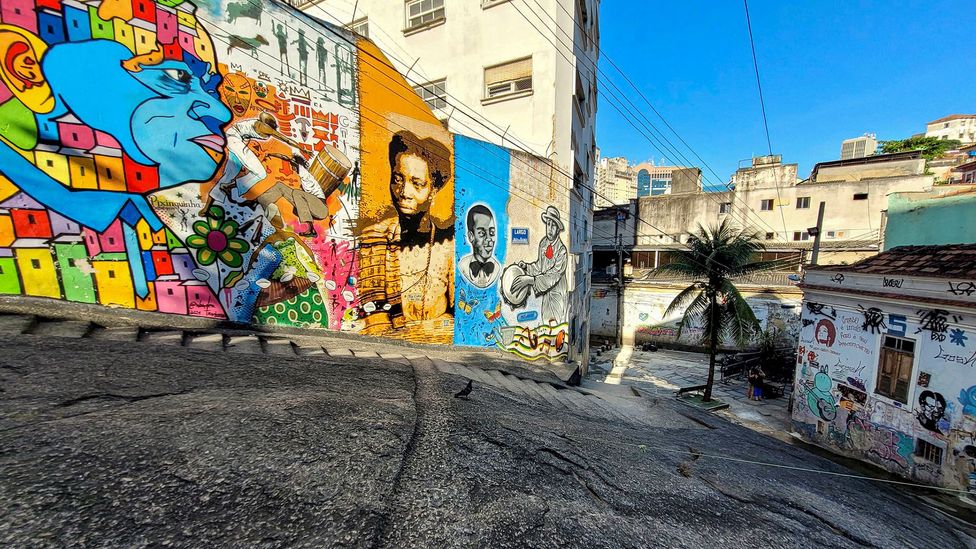
While these African-Brazilians lived in poverty, they prospered culturally, from practicing Afro-Brazilian religions, such as Candomblé, to evolving the first Rio samba gatherings. It was at Pedra do Sal where the first Carnival “ranchos” – the beginnings of Rio’s now famous samba schools, the clubs that create the Carnival parades – and where the first samba circles appeared, giving it the nickname “the birthplace of samba”. Some of the greatest names in Brazilian music have played here, including João da Baiana, Pixinguinha and Donga.
Yet just more than 100 years ago, it would have been impossible for these communities to have imagined that samba would one day underpin Brazil’s national identity. Rio’s elite were suspicious of samba and criminalised it. “Samba was persecuted, and police arrested musicians as criminals and broke their instruments,” Tavares said.
Because of this, samba gatherings were held in secret behind closed doors. One of the most famous houses for samba parties belonged to Hilária Batista de Almeida, known as Aunt Ciata, who is remembered as an influential figure in the development of Rio’s samba. Her legacy lives on at the Casa da Tia Ciata, a cultural space preserving her story, just next door to Pedra do Sal.
Samba wasn’t the only African cultural manifestation to be persecuted: capoeira, a martial art disguised as a dance, was also seen as a threat, leading public authorities in the 19th Century to ban it. Tavares explained this story while pointing to a group of silhouetted figures in different capoeira positions painted onto a street wall just 200m from Pedra do Sal. Next to them was a portrait of a man called Zumbi dos Palmares, who, she explained, was the leader of the Quilombo dos Palmares.
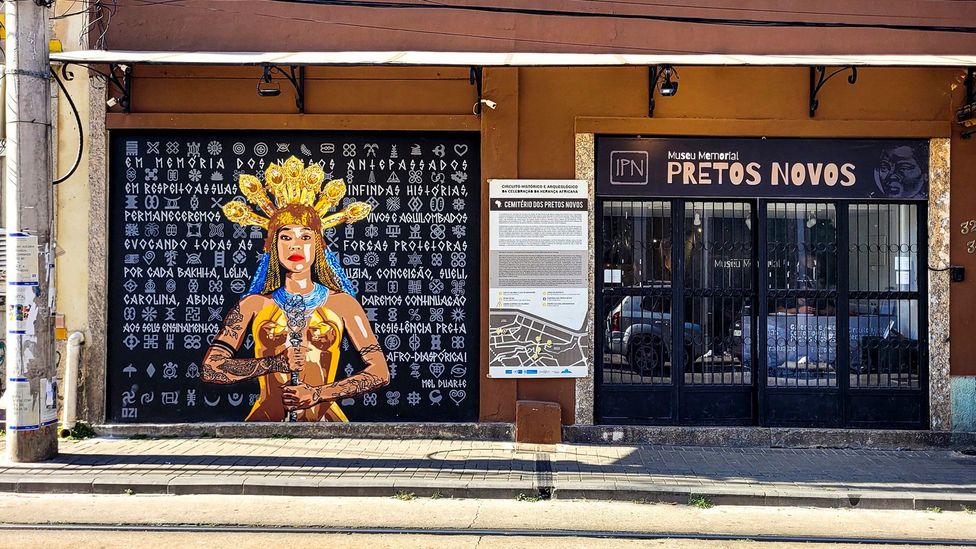
Quilombos were communities made up of Black enslaved people who resisted slavery, largely formed by escapees who fled to free and isolated land, and the Quilombo dos Palmares in Brazil’s north-east was the largest and oldest of its kind. Today, Zumbi symbolises Black resistance and is a reminder of Brazil’s slave history.
Behind me was Largo de São Francisco da Prainha, a square that’s home to the statue of Mercedes Baptista, a ballet dancer and choreographer and Rio’s first Black woman to dance in the Municipal Theatre in 1948. Today, restaurants and bars with live music circle this open space and it’s a good spot to try Brazil’s African-inspired cuisine.
“Afro-Brazilian food is some of the most delicious you’ll find in Brazil,” said Tom Le Mesurier, the founder of Eat Rio Food Tours. His recommendations include moqueca baiana, a seafood stew with coconut milk; and acarajé, a street food dish with West African origins of black bean patties cooked in red palm oil and topped with salted prawns and other pastes. “There is a whole lot going on here in terms of flavour and texture,” he added.
There’s a whole lot going on everywhere in Little Africa. While its story remains largely concealed on the outside, walking through the region on a guided tour opens a door into this complex past, and honours the handful of people in tourism and research who work hard to make sure this history is not forgotten, but amplified, too.
“You have to know this history, visit this place, know what happened and what Brazil was like at that time,” Merced said. “Then, compare that to what Brazil is today and what we want for tomorrow.”
Have An Advert Or Article You Want Us To Publish? WhatsApp: +256760530830.

